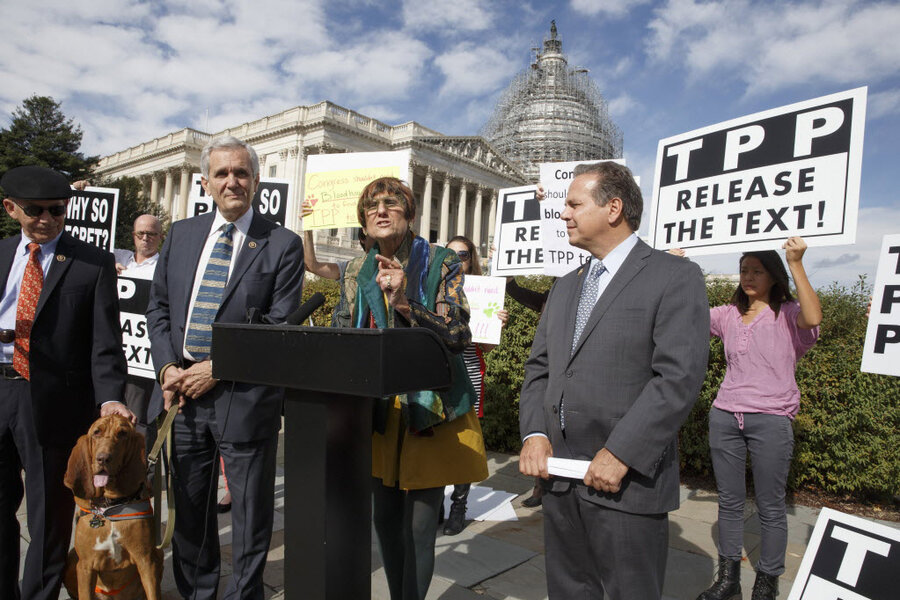Details of controversial Pacific trade deal: What you need to know
Loading...
Details of the Trans-Pacific Partnership (TPP) deal were released Thursday, potentially setting off another round of debate on the controversial agreement involving one dozen nations.
Labor unions and environmentalists have criticized the 12-country agreement, citing worries it would cut protections for and add competition to already-stagnating wages and hand more power to multinational corporations.
Many in Congress have expressed concerns the pact would further hamper US job prospects just as the country is climbing out of a years-long recession.
President Obama has been a staunch supporter of the TPP, but he faces stiff opposition, even from members of his Democratic Party.
Congressional challenges may only go so far, however, as members may not suggest amendments and are limited to only a yes or no vote.
A major stipulation of the TPP agreement requires two other member countries to overhaul human rights and labor practices. The deal compels Vietnam to open up to labor unions while Malaysia must bolster its efforts to ebb the glut of human trafficking in the country.
A final deal was reached among the 12 nations on Oct. 5, the extensive details of which were released online Thursday.
Here are some key takeaways from the newly released text:
- The 12 nations in the TPP are the United States, Japan, Mexico, New Zealand, Australia, Chile, Peru, Canada, Brunei, Singapore, Vietnam, and Malaysia.
- The Obama administration says the pact would eliminate 18,000 taxes other countries impose on US exports.
- The deal would grant multinational corporations the right to challenge laws and regulations in secret tribunals when they are considered trade barriers. Countries can ban tobacco companies from taking part in these tribunals.
- The agreement’s language was influenced by multinational companies including pharmaceutical firms, recording studios, agribusinesses, and others. Critics say the deal was forged in secrecy.
- The pact calls for improved freedoms and more attention to the needs of indigenous people and overall public health, better access to medicine for people living in the TPP countries and increased protections for drug patents.
- Malaysia, whose Prime Minister Najib Razak is accused of stealing nearly $700 million from a development fund, would be required to allow freedom of movement for victims of human trafficking and negate rules restricting labor unions.
- With the threat of trade sanctions, TPP countries are required to ban child labor and employment discrimination and give workers the right to form unions.
- New markets would open for Vietnamese clothing firms and Malaysian electronics companies.
This report contains material from The Associated Press and Reuters.





